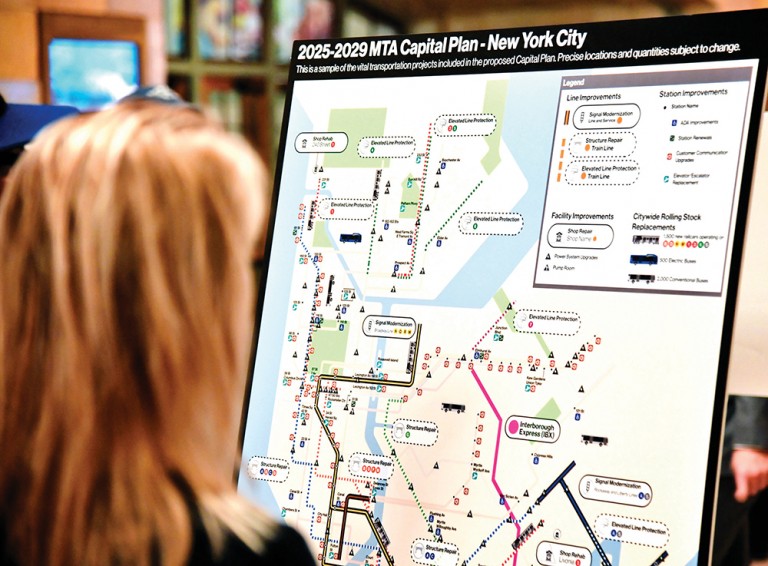By Forum Staff
After a brief period of financial stability secured by an infusion of state funds last year, the Metropolitan Transportation Authority now faces growing fiscal uncertainties and risks that create projected budget gaps that start at $211 million this year and increase to $652 million in 2028, according to a new report from State Comptroller Tom DiNapoli. Those gaps could grow much wider if various budget risks that the MTA has identified come to pass, the comptroller added.
The MTA’s recovery from the pandemic relies on riders returning systemwide and the MTA’s best option for achieving that is increased safety, reliability, and frequency of service. But with paid ridership not increasing at the rate MTA had expected, the authority has had to lower its expectations for farebox revenue.
DiNapoli’s report highlights how uneven the ridership recovery has been across the MTA’s various systems — Long Island Rail Road is closest to pre-pandemic levels, but weekday service is still down around 20 percent, with Metro-North further behind. Bus ridership had initially recovered faster but has trended slightly down since June 2023. Disparate growth among subway lines and different parts of the city have been a drag on overall ridership.
By contrast, the 335 million crossings at the MTA’s seven bridges and two tunnels last year set a new record, with 339 million crossings expected this year. Increased toll revenue, however, has not made up for slow farebox growth, forcing the MTA to budget for $811 million less in bus and subway revenue through 2027, including $200 million annually to account for the risk of continued fare evasion.
Another significant revenue stream that was revised downward from the MTA’s February Plan to its July Plan is the projected collection of real estate-related taxes, which are expected to be $790 million lower over the next four years due to lower commercial real estate activity in New York City.
As revenue growth is adjusted downward, the MTA’s expenses reflect growing costs for payroll and benefits, debt service, paratransit, and supplies and materials. Overtime is another growing cost, reaching $1.4 billion in 2023, above the previous record set in 2018. The rise in overtime spending is caused in part by the need to fill vacancies and fewer available workers, although the MTA does offset some of the additional overtime cost with payroll savings. The MTA has authorized new hiring and projects overtime costs will drop.
The MTA’s financial plan also does not yet factor in recent uncertainty for funding of its 2020-2024 capital program. The pause on congestion pricing has created a $15 billion funding shortfall in that capital program, and the 2025-2029 program was approved with $33 billion in unidentified funding, for a total of $48 billion in unidentified capital funding over the two programs. The MTA is relying on securing funding in the state budget in the upcoming legislative session. The outcome will have implications for capital investment and on maintenance and debt service costs.
DiNapoli’s report warns that if the loss of revenue from the pause on congestion pricing is not resolved, and if other risks noted in the MTA’s plan and the comptroller’s report come to pass — such as an economic slowdown that damages ridership and tax revenues — budget gaps could reach as much as $3 billion in 2028.

